Time to read:12 minutes
Table of Contents
Introduction to Pineapple in Baking
Pineapple is more than just a tropical fruit; it is a versatile ingredient in baking. Its sweet, tangy flavor adds a unique twist to baked goods, making them moist and flavorful. Pineapple is often used in cakes, muffins, and breads to enhance both taste and texture. But what exactly makes pineapple such a valuable addition to baking? Let’s dive into its role and history in the culinary world.
1.1 What is Pineapple’s Role in Baking?
Pineapple plays a dual role in baking: as a flavor enhancer and a texture improver. Its natural sugars add sweetness, while its acidity balances flavors in rich recipes. The fruit’s juice and pulp help keep baked goods moist, preventing dryness that often occurs during baking.
- Enhances Sweetness Naturally: Pineapple reduces the need for extra sugar by providing its natural sweetness. This makes it a healthier choice for desserts.
- Adds Moisture: Pineapple juice and pulp work as natural moistening agents, keeping cakes and breads soft and tender.
- Improves Texture: Bromelain, an enzyme in pineapple, helps break down proteins. This can tenderize batter and dough, creating a lighter, fluffier texture.
For example, in a classic pineapple upside-down cake, the pineapple slices caramelize beautifully during baking, adding both flavor and an attractive presentation.
For tips on maintaining moisture in baked goods, visit our How do you keep madeleines moist?
Learn more about the science of pineapple and bromelain on Wikipedia.
1.2 Historical Use of Pineapple in Culinary Arts
Pineapple has a rich history in the culinary world, especially in baking. Originating in South America, it was introduced to Europe in the 16th century. Its distinctive flavor quickly made it a luxury ingredient in royal kitchens.
- Tropical Symbol: In the 19th century, pineapple became a popular addition to tropical-themed desserts, symbolizing hospitality and wealth.
- Canned Pineapple Revolution: In the early 1900s, canned pineapple made it easier for bakers to use this fruit. Recipes like pineapple upside-down cake gained popularity during this time.
- Global Spread: Today, pineapple is a staple in many baking traditions, from tropical cakes in Hawaii to sweet bread in Asia.
These historical roots continue to influence modern baking, where pineapple is celebrated for its versatility.
1.3 Why Pineapple is Gaining Popularity in Baking Recipes
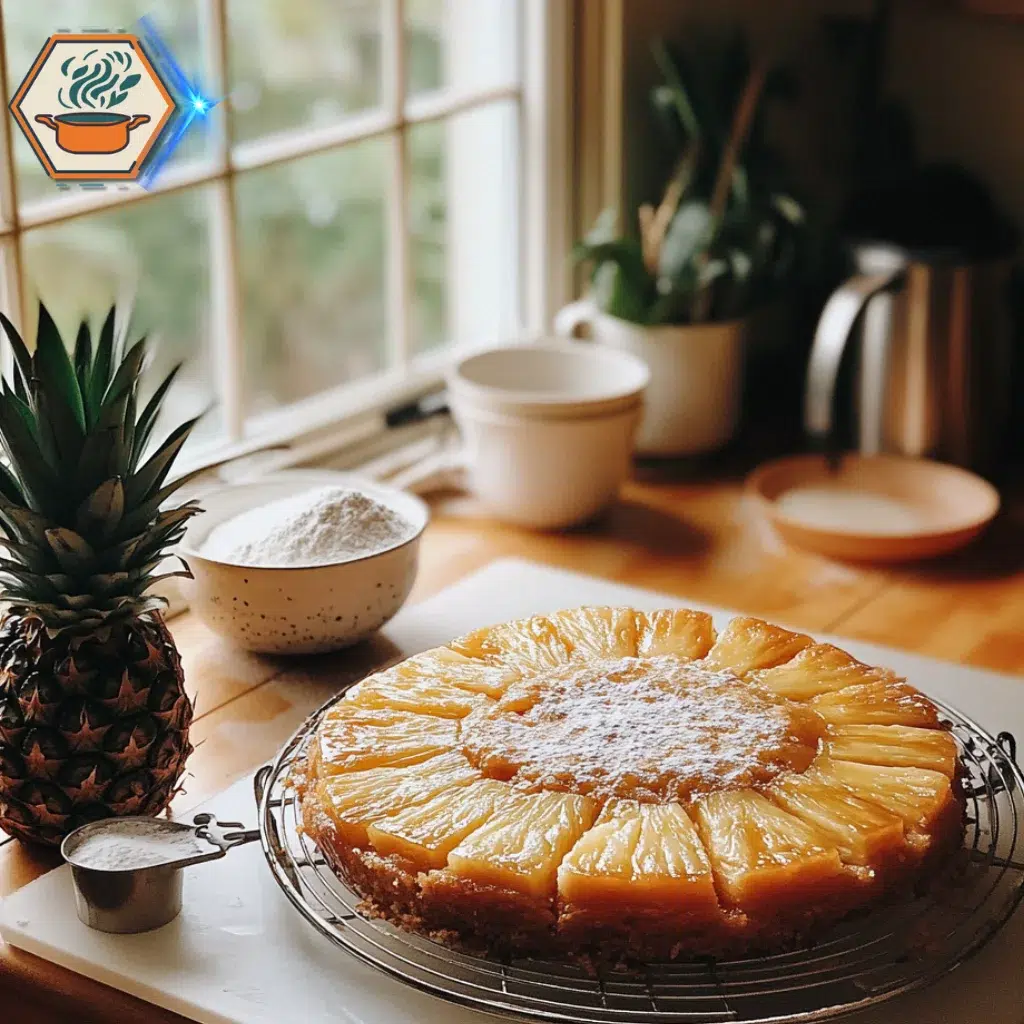
Modern bakers love pineapple for its unique ability to elevate baked goods. Here’s why it’s trending in recipes today:
- Healthier Desserts: With an increasing focus on healthier baking, pineapple offers natural sweetness and reduces the need for processed sugars.
- Flavor Variety: The tangy-sweet flavor of pineapple complements ingredients like coconut, banana, and cinnamon.
- Visual Appeal: Pineapple’s vibrant color and caramelization add visual interest to cakes and pastries.
Nutritional Benefits in Desserts
Pineapple isn’t just delicious—it’s also packed with nutrients that enhance the value of desserts.
- Rich in Vitamin C: Boosts immunity and acts as a natural preservative in baked goods.
- Low in Calories: Makes it an excellent choice for guilt-free desserts.
- Digestive Aid: Bromelain helps improve digestion, making pineapple-infused treats easier on the stomach.
Including pineapple in recipes not only enhances flavor but also adds a nutritional boost, making desserts more appealing to health-conscious consumers. For instance, a slice of pineapple bread delivers both energy and essential vitamins without excessive calories.
The Science Behind Pineapple in Baking
2.1 How Pineapple Affects Baking Chemistry
Enzymes and Their Role
Pineapple contains natural enzymes, primarily bromelain, that significantly influence the chemistry of baking. Bromelain breaks down proteins into smaller fragments, which can impact the structure of baked goods. This enzyme is particularly effective in softening proteins like gluten, leading to changes in the dough’s elasticity and texture.
When using fresh pineapple, these enzymes remain active and can prevent some recipes, such as gelatin-based desserts, from setting properly. In baking, they alter the consistency of doughs and batters, making them softer and less elastic. This effect is reduced when using canned pineapple, as the heat of the canning process deactivates bromelain.
Impact on Dough and Texture
The tenderizing effects of pineapple enzymes mean that incorporating pineapple into your recipes can result in softer cakes and loaves. For example, pineapple’s natural acidity balances the pH of the batter, ensuring a stable rise during baking. This acidity can also help activate baking soda, enhancing the leavening process and producing a light, fluffy texture.
However, too much pineapple can make the dough overly soft, causing structural issues. Bakers must carefully measure pineapple to maintain a balance between flavor and functionality. Using pineapple puree or juice instead of chunks can also help distribute its effects more evenly.
Explore more on How many hours should you cook bone broth? to better understandUnderstanding Bone Broth Basics
2.2 The Role of Bromelain in Baking
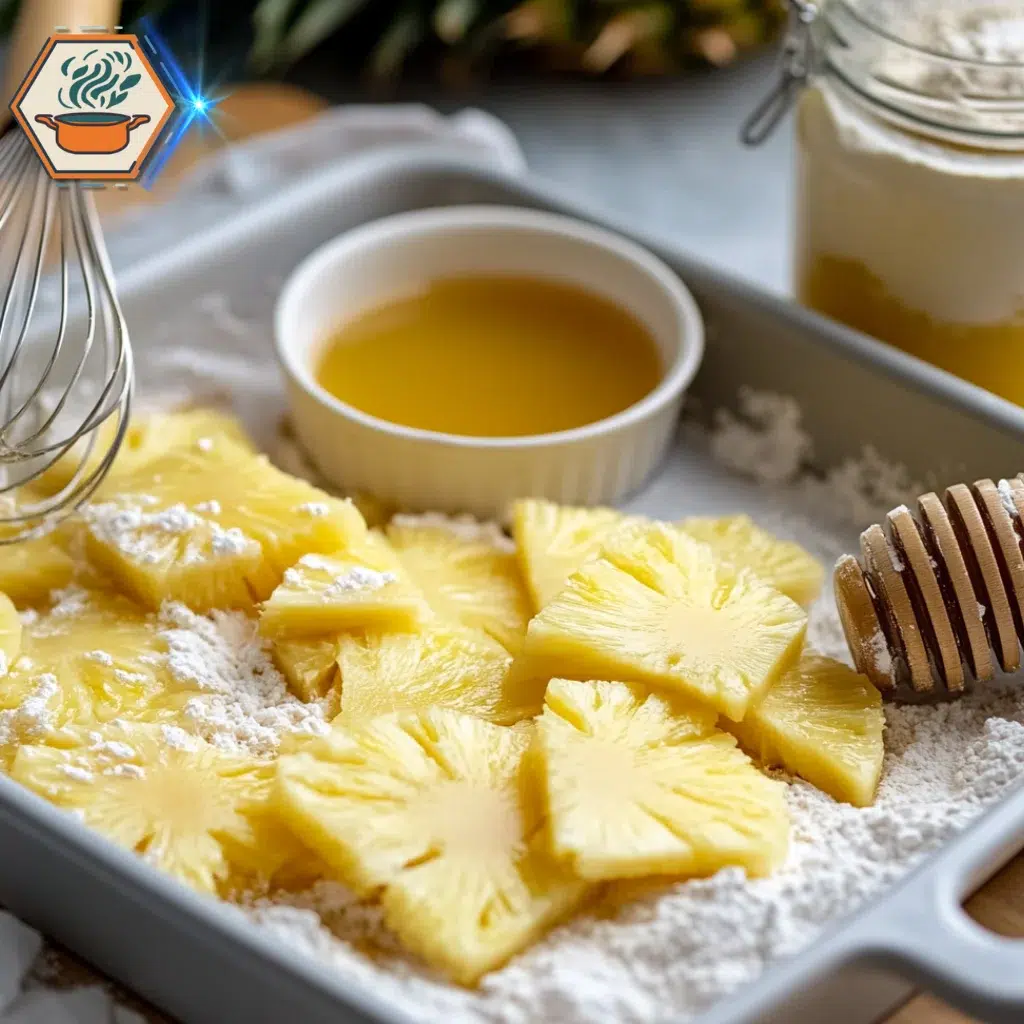
Tenderizing Effects on Baked Goods
Bromelain’s protein-breaking properties are especially noticeable in recipes that involve meat or heavy proteins, but its influence extends to baking as well. When added to muffin or cake batter, bromelain helps to soften the crumb structure. This results in moist, tender cakes that stay fresh longer.
For breads, however, excessive bromelain activity can interfere with gluten development, resulting in a dense loaf. To counter this, many recipes recommend lightly cooking fresh pineapple before use or substituting with canned pineapple to deactivate the enzyme.
Acidity Balancing in Recipes
Pineapple’s acidity plays a crucial role in achieving the perfect taste and texture. In recipes that call for baking soda, the acidity reacts with the soda to create carbon dioxide bubbles, giving your baked goods an airy lift. This reaction is essential for recipes like pineapple upside-down cake, where the balance between the sweet caramel topping and tangy pineapple is key to the dessert’s appeal.
Using pineapple as an acidic ingredient can replace other acids like lemon juice or vinegar in recipes. However, it’s important to account for pineapple’s natural sugars, which may require adjustments to the overall sweetness.
2.3 Common Myths and Misunderstandings
Does Pineapple Make Baking Easier?
A common myth is that pineapple simplifies baking by automatically improving texture and flavor. While pineapple’s enzymes and acidity provide distinct benefits, they also require precise handling. Improper use of pineapple can lead to overly soft or dense baked goods.
Another misunderstanding is that fresh and canned pineapple can be used interchangeably. Fresh pineapple’s active bromelain can disrupt recipes that depend on specific protein structures, whereas canned pineapple’s deactivated enzymes offer more consistent results.
It’s also believed that pineapple can replace fats in baking. While pineapple adds moisture and flavor, it cannot fully replicate the structural contributions of fats like butter or oil. Pairing pineapple with the right ingredients ensures both taste and texture are optimized.
By understanding the science behind pineapple in baking, bakers can better harness its unique properties to create delicious, well-textured treats.
Incorporating Pineapple into Baking Recipes
3.1 Types of Pineapple Suitable for Baking
Pineapple is a versatile fruit that enhances baked goods with its sweet and tangy flavor. Choosing the right type of pineapple can greatly impact the texture and taste of your recipes. Here’s a breakdown:
Fresh vs. Canned Pineapple
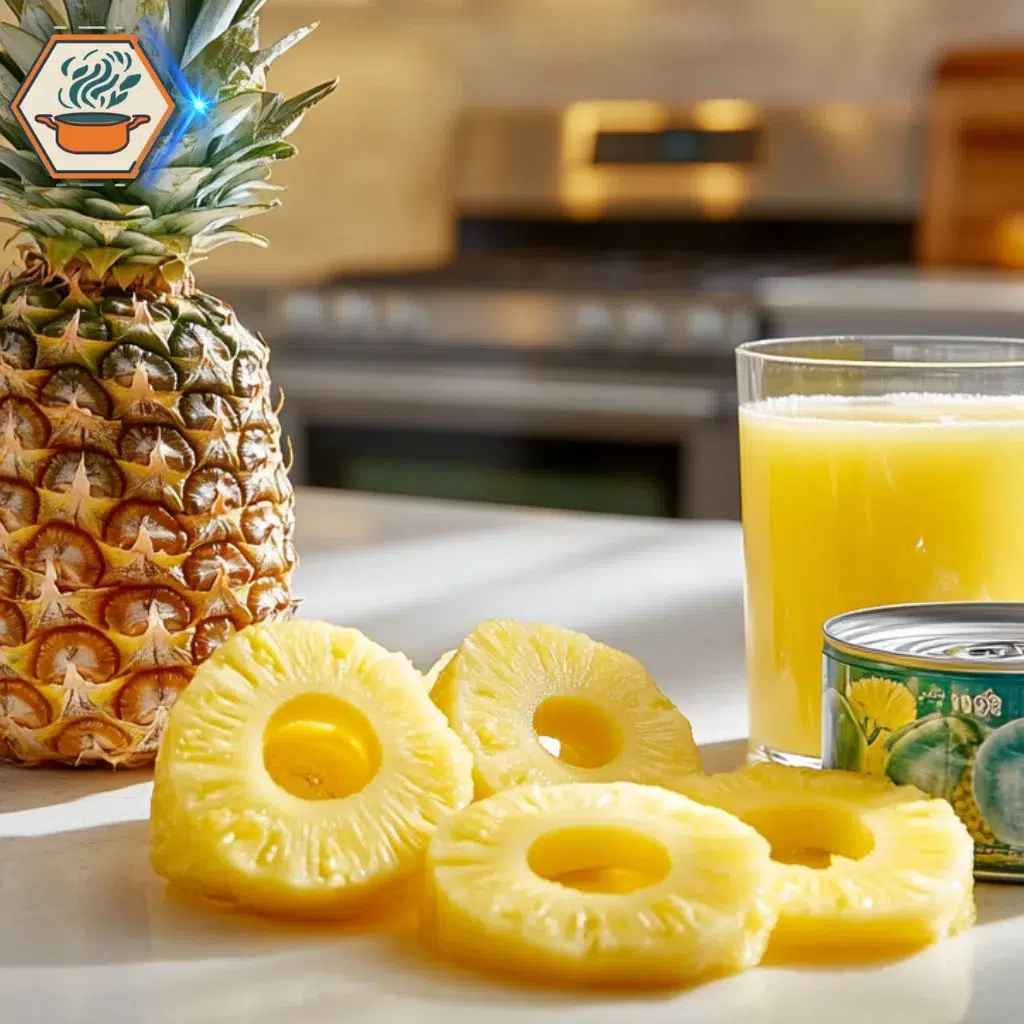
- Fresh Pineapple: Fresh pineapple offers a vibrant taste and firm texture. It works best in recipes where the pineapple’s natural juiciness is essential, such as cakes and tarts.
- Tip: Always core and peel fresh pineapple properly to avoid fibrous pieces.
- Canned Pineapple: Convenient and consistent in sweetness, canned pineapple is perfect for quick recipes. It’s available in various forms, including slices, chunks, and crushed.
- Note: Canned pineapple often comes in syrup or juice. Opt for juice-packed pineapple for a healthier choice.
Crushed, Sliced, and Juice Variations
- Crushed Pineapple: Ideal for muffins, breads, and cookies where small pieces evenly distribute moisture.
- Sliced Pineapple: A classic choice for upside-down cakes or decorative tarts.
- Pineapple Juice: Useful for flavoring batters, glazes, or syrups without altering the texture of the baked item.
3.2 Best Techniques for Baking with Pineapple
Incorporating pineapple effectively into your baking requires careful preparation and pairing with complementary ingredients.
Preparing Pineapple for Optimal Flavor
- Draining Excess Liquid: For canned pineapple, drain and pat dry to prevent soggy baked goods.
- Caramelizing Fresh Pineapple: Lightly caramelize fresh pineapple slices to deepen their flavor. This works wonderfully for toppings.
Mixing Pineapple with Other Ingredients
- Balancing Acidity: Pineapple’s acidity can react with baking soda or powder. Adjust the quantities to ensure proper leavening.
- Pairing Flavors: Combine pineapple with ingredients like coconut, nuts, or spices such as cinnamon and nutmeg for tropical undertones.
3.3 Popular Baking Recipes Using Pineapple
Pineapple’s unique taste makes it a favorite in various baked treats. Here are some beloved recipes:
Pineapple Upside-Down Cake
A retro classic that remains timeless. The buttery caramel topping combined with pineapple slices creates a rich, indulgent dessert.
- Quick Tip: Add a maraschino cherry in the center of each pineapple slice for a pop of color.
Tropical Pineapple Muffins
Soft, fluffy muffins infused with crushed pineapple and a hint of coconut. These are great for breakfast or a snack.
Moist Pineapple Bread
This quick bread combines pineapple and banana for a naturally sweet, moist loaf. It’s perfect with a cup of tea or coffee.
- Pro Tip: Toast slices and add a pat of butter for a delicious treat.
3.4 Tips for Substituting Pineapple in Recipes
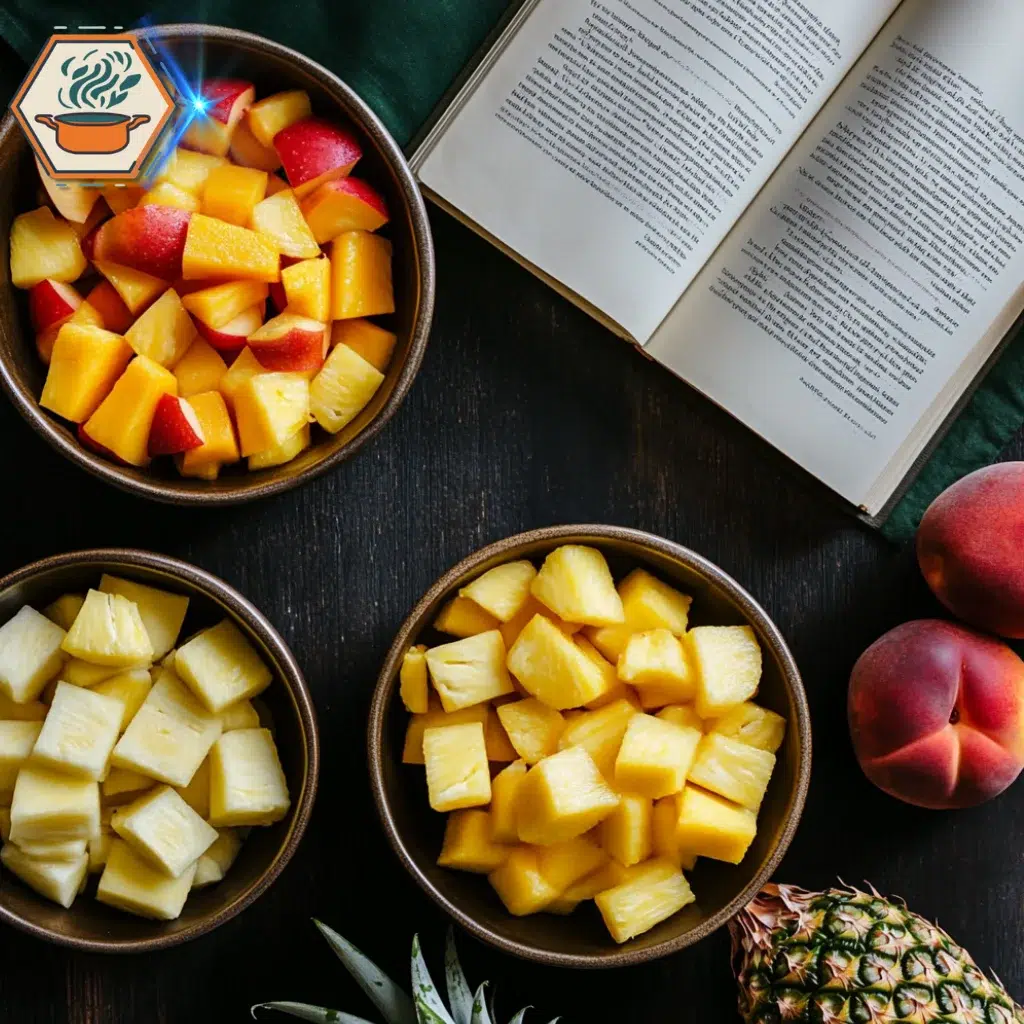
If pineapple isn’t readily available, there are several substitutes you can use without losing the essence of the recipe.
- Mango or Papaya: Both fruits offer a tropical flavor and similar texture.
- Applesauce: Works well in baked goods where pineapple adds moisture rather than chunks.
- Citrus Zest and Juice: Lemon, orange, or lime can replicate pineapple’s tanginess in certain recipes.
- Note: Always adjust the sugar in the recipe when using substitutes to maintain balance.
FAQs and Practical Insights about Baking with Pineapple
4.1 How Does Pineapple Affect the Baking Time?
Pineapple can significantly influence baking time due to its high moisture content. When added to baked goods, the extra liquid may increase the overall time required for proper cooking. To manage this, ensure you drain canned or fresh pineapple thoroughly before incorporating it into your recipes.
Additionally, always check for doneness by inserting a toothpick into the center of your baked item. If it comes out clean, your dish is ready. For recipes like pineapple upside-down cake, the sugars in the fruit may caramelize, so keep an eye on the edges to prevent burning.
4.2 Can Pineapple Replace Other Ingredients in Recipes?
Yes, pineapple can be a fantastic substitute in some cases. For instance, its natural sweetness makes it an excellent replacement for sugar in muffins or cakes. Pineapple puree can also be used as a substitute for oil or butter, adding moisture and reducing the fat content in recipes.
However, keep in mind that pineapple’s distinct flavor may alter the overall taste profile. To strike the right balance, combine it with complementary ingredients like coconut or vanilla.
4.3 Is Pineapple Safe to Use with All Types of Flours?
While pineapple is compatible with most flours, it’s essential to consider texture. For example, all-purpose flour works well in most cases, but gluten-free flours like almond or coconut flour may require adjustments due to their unique properties.
Pineapple’s acidity can also impact baking soda or baking powder reactions. To ensure your baked goods rise properly, measure leavening agents precisely. If you’re experimenting, start small and adjust as needed.
4.4 How Do You Prevent Overwhelming Sweetness from Pineapple?
To avoid an overly sweet dish, balance pineapple with contrasting flavors. Adding citrus zest, like lime or lemon, can enhance the taste without making it cloyingly sweet. A pinch of salt can also work wonders to bring out pineapple’s natural tanginess.
For recipes like pies or tarts, use unsweetened pineapple or reduce the sugar in the filling. Consider pairing it with ingredients like cream cheese or yogurt to introduce a creamy, slightly tart element. Adjusting sweetness levels ensures a harmonious flavor balance.
4.5 Best Storage Practices for Pineapple-Infused Baked Goods
Proper storage is crucial for maintaining the freshness of pineapple-infused treats. Here are some tips:
- Refrigeration: Store baked goods in an airtight container and keep them in the fridge. The moisture from pineapple can lead to quicker spoilage if left at room temperature.
- Freezing: For longer storage, freeze items like pineapple muffins or cakes. Wrap them tightly in plastic wrap, followed by aluminum foil, to prevent freezer burn.
- Reheating: Allow frozen baked goods to thaw at room temperature. For a fresh-out-of-the-oven taste, reheat them in an oven or microwave briefly.
Following these steps will help retain the flavor and texture of your baked creations.
By incorporating pineapple thoughtfully into your recipes, you can create delightful, flavorful treats that stand out. Whether you’re baking a classic pineapple upside-down cake or experimenting with new ideas, these tips ensure success every time.

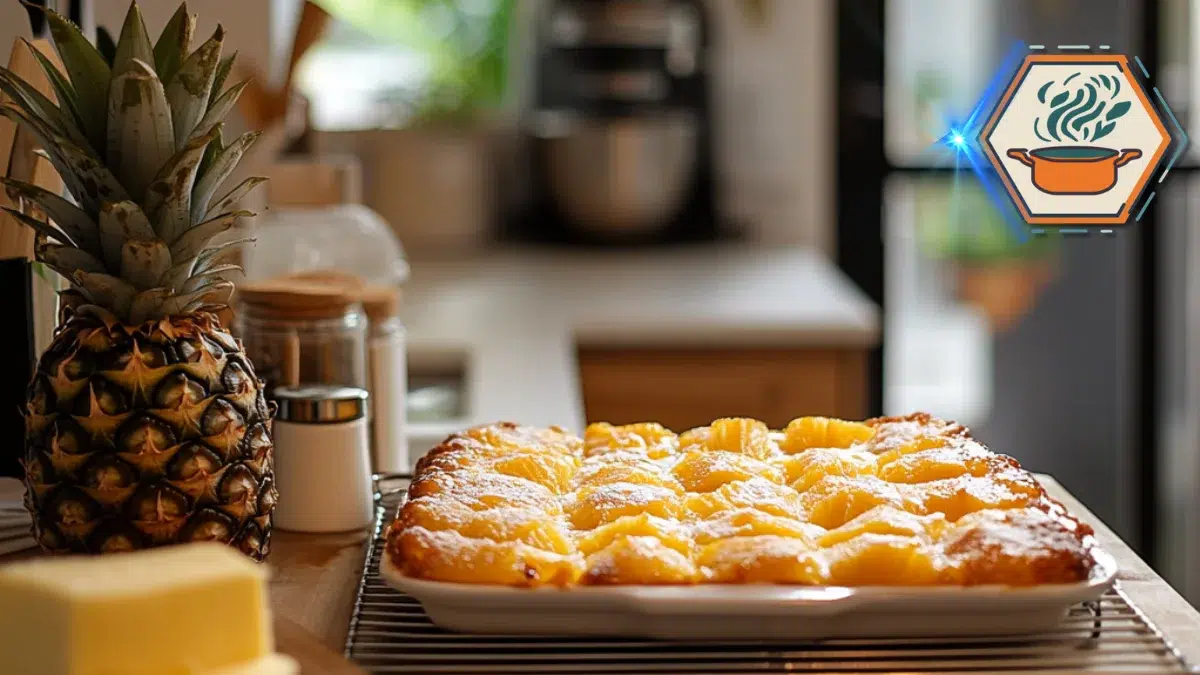
1 thought on “What does pineapple do in baking?”